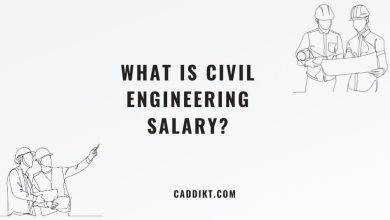The vast expanse of the universe has always sparked human curiosity. Our desire to explore the skies and beyond has led to remarkable innovations and discoveries, many of which have been achieved through the field of aerospace engineering. This discipline, encompassing the design, development, testing, and production of aircraft or spacecraft, has been at the forefront of technological advancement, contributing to societal progress in ways that often go unnoticed.
Aerospace engineering has played an integral role in shaping the world as we know it. From enabling global travel and communication, to pushing the boundaries of space exploration, it is a field that continues to evolve and inspire. This comprehensive guide will delve into the intricacies of aerospace engineering, exploring its history, sub-disciplines, notable figures, groundbreaking projects, and future trends.
Key Takeaways
- Aerospace engineering is a broad field that involves the design, development, testing, and production of aircraft and spacecraft.
- The discipline is split into two main branches: aeronautical engineering (focused on aircraft within the Earth’s atmosphere) and astronautical engineering (concerned with spacecraft).
- Many notable figures have contributed to aerospace engineering, including Robert H. Goddard, the father of modern rocketry, and Sergei Korolev, the lead Soviet rocket engineer.
- Aerospace engineering has been central to some of the most notable projects and missions in aviation and space exploration history, such as the Apollo missions and the International Space Station (ISS).
- Future trends in aerospace engineering include space tourism, sustainable aviation, Unmanned Aerial Vehicles (UAVs), and Mars exploration.
What is Aerospace Engineering?
Aerospace Engineering is a specialized branch of engineering focused on the design, development, testing, and optimization of airborne and space vehicles. It encompasses two primary subfields: aeronautical engineering (the study of flight and the design of aircraft) and astronautical engineering (the design and development of spacecraft).
Aerospace Engineering revolves around the fundamental principles of physics, mathematics, and chemistry. It’s a discipline that demands a high degree of precision, given the complexities and risks associated with flight and space exploration.
History of Aerospace Engineering
The history of Aerospace Engineering began in the early 20th century with the first powered flights made by the Wright Brothers. However, the true concept of aerospace engineering emerged in the mid-1950s with the onset of the space age.
- 1903: Wright brothers made the first powered flight
- 1957: The USSR launched Sputnik 1, the first artificial satellite
- 1961: Yuri Gagarin became the first human to orbit Earth
- 1969: Apollo 11 mission successfully landed humans on the Moon
Subfields of Aerospace Engineering
Aerospace engineering is broadly divided into two major subfields:
- Aeronautical Engineering: This field deals with aircraft that operate within the Earth’s atmosphere. This includes the design and analysis of airplanes, helicopters, and unmanned aerial vehicles (UAVs).
- Astronautical Engineering: This field is concerned with the design and development of spacecraft, including satellites, rockets, and space stations.
Key Concepts in Aerospace Engineering
Here are some of the essential principles and concepts that every aerospace engineer should understand:
- Aerodynamics: The study of how air interacts with moving objects.
- Propulsion: The methods of producing thrust to propel an aircraft or spacecraft.
- Avionics: The electronic systems used on aircraft, satellites, and spacecraft.
- Materials Science: The study of materials used in the construction of aircraft and spacecraft.
- Structural Analysis: The examination of the load-bearing components of aircraft and spacecraft.
- Astrodynamics: The study of the motion of artificial bodies in space.
Career Opportunities in Aerospace Engineering
Aerospace engineers can find employment in a variety of sectors:
- Aerospace Manufacturing: Companies like Boeing, Airbus, SpaceX, and Blue Origin are always on the lookout for talented aerospace engineers.
- Government Agencies: Organizations like NASA, ESA, and ISRO hire aerospace engineers for space exploration and research.
- Defense: The military and defense contractors need aerospace engineers for the design and maintenance of aircraft and defense systems.
- Consulting: As a consultant, aerospace engineers provide expert advice to companies on the design, construction, and repair of aircraft and spacecraft.
Learn more about careers in Aerospace Engineering
Top Universities for Aerospace Engineering
If you’re considering a career in aerospace engineering, here are some of the top universities known for their excellent aerospace engineering programs:
- Massachusetts Institute of Technology (MIT), USA
- Stanford University, USA
- California Institute of Technology (Caltech), USA
- University of Cambridge, UK
- Imperial College London, UK
Notable Aerospace Engineers and their Contributions
Numerous aerospace engineers have made significant contributions to the field. Here are a few notable figures:
- Robert H. Goddard: Known as the father of modern rocketry, Goddard made significant contributions to the field of astronautics.
- Theodore von Kármán: A key figure in aeronautics, von Kármán made substantial advancements in the understanding of aerodynamics.
- Sergei Korolev: As the lead Soviet rocket engineer and spacecraft designer, Korolev was instrumental in initiating the space age with the launch of Sputnik.
Future Trends in Aerospace Engineering
As we look towards the future, several exciting trends are shaping the field of aerospace engineering:
- Space Tourism: With companies like SpaceX, Blue Origin, and Virgin Galactic leading the charge, space tourism is set to become a reality.
- Sustainable Aviation: With increasing environmental concerns, the development of eco-friendly aircraft is a significant focus.
- Unmanned Aerial Vehicles (UAVs): From delivery drones to reconnaissance aircraft, UAVs are becoming increasingly prevalent.
- Mars Exploration: With both NASA and private companies setting their sights on Mars, the red planet is the next big frontier in space exploration.
The field of Aerospace Engineering is vast and continually evolving. From the earliest flights to the latest space explorations, aerospace engineers have been at the forefront of technological advancement. As we look towards the future, their role in shaping our world and beyond remains more significant than ever.
Aerospace engineers have been central to some of the most notable projects and missions in aviation and space exploration history. Here are just a few:
- Apollo Missions: The Apollo missions by NASA, most famously Apollo 11, marked a significant milestone in human history by landing astronauts on the Moon for the first time in 1969.
- International Space Station (ISS): This multinational collaborative project represents a pinnacle of engineering and international cooperation.
- Hubble Space Telescope: Launched in 1990, the Hubble Space Telescope has provided some of the most detailed images of space, leading to numerous important discoveries.
- Mars Rovers: The successful design, launch, and operation of Mars rovers, like Spirit, Opportunity, and Perseverance, have revolutionized our understanding of the Red Planet.
Pioneering Companies in Aerospace Engineering
Several companies have made significant strides in aerospace engineering, pushing the boundaries of what’s possible. Here are a few:
- SpaceX: Founded by Elon Musk, SpaceX has become a major player in space exploration, pioneering reusable rocket technology and ambitious projects like Starship for future Mars colonization.
- Boeing: A longstanding leader in aviation, Boeing has designed and built a multitude of aircraft, from commercial airliners like the 747 to defense aircraft and space vehicles.
- Airbus: A European multinational aerospace corporation, Airbus is one of the world’s largest airliner manufacturers, known for models like the A380, the world’s largest passenger airliner.
- Blue Origin: Founded by Jeff Bezos, Blue Origin is focused on building a future where millions of people can live and work in space.
Explore more about these companies and their impact on Aerospace Engineering
The Role of Aerospace Engineering in Society
Aerospace Engineering plays a significant role in modern society. From the planes that enable global travel and commerce to the satellites that provide essential data for weather forecasting, communication, and navigation, the impact of aerospace engineering is profound and pervasive. Additionally, the exploration of space has the potential to drive technological advancement, answer fundamental scientific questions, and even ensure the long-term survival of humanity.
The Intersection of Aerospace Engineering and Emerging Technologies
Emerging technologies are having a significant impact on the field of aerospace engineering:
- Artificial Intelligence and Machine Learning: These technologies are being used for everything from autonomous drone navigation to predictive maintenance for aircraft.
- Additive Manufacturing (3D Printing): This technology is revolutionizing the production of aerospace components, allowing for more complex designs and lighter, stronger materials.
- Virtual and Augmented Reality: These technologies are being used for more effective and immersive training programs for pilots and astronauts.
The integration of these technologies within aerospace engineering is not only enhancing current practices but also opening up new possibilities for exploration and development in the field.
FAQ on Aerospace Engineering
1. What Skills are Required for a Career in Aerospace Engineering?
Aerospace engineering is a field that combines a variety of technical and soft skills. A strong foundation in mathematics and physics is essential, as these are the fundamental principles upon which much of aerospace engineering is based. Engineers must also be proficient in computer-aided design (CAD) software, which is commonly used to design aircraft and spacecraft.
In addition to these technical skills, aerospace engineers must have strong problem-solving skills. This field is all about overcoming challenges – whether that’s finding a way to increase the fuel efficiency of an aircraft or figuring out how to keep a spacecraft’s instruments functioning in the harsh conditions of space. Creativity and innovation are also important, as new solutions and technologies are constantly needed.
Communication skills are also vital. Aerospace engineers often work in teams, and being able to effectively convey ideas and findings is critical. This includes not only verbal communication, but also writing skills. Engineers frequently have to write reports and present their work to colleagues, managers, and clients.
2. What are the Risks Associated with Aerospace Engineering Projects?
Aerospace engineering projects often come with significant risks due to the inherent complexities and high stakes of the field. One of the most well-known risks is the safety of human life. When designing and manufacturing aircraft and spacecraft, there is no room for error as failures can lead to loss of life.
Financial risks are also significant. Aerospace projects often require massive investment, and delays or failures can have substantial financial consequences. For example, overruns in the development of a new aircraft model can cost a company billions of dollars.
There are also technological risks. The aerospace field is continually evolving, and engineers must keep up with the latest technologies and innovations. If a company fails to do so, they risk falling behind their competitors.
3. What is the Difference Between Aerospace and Aeronautical Engineering?
While the terms “aerospace engineering” and “aeronautical engineering” are often used interchangeably, there is a slight difference between the two. Aeronautical engineering is actually a subfield of aerospace engineering.
Aeronautical engineering is focused on designing and developing aircraft that operate within the Earth’s atmosphere, such as planes and helicopters. This involves studying aerodynamics, structures, propulsion, and stability and control.
On the other hand, aerospace engineering covers not only the design and development of aircraft (aeronautical engineering) but also spacecraft, including rockets and satellites. This is often referred to as astronautical engineering. It involves studying additional subjects like astrodynamics and space systems design.
4. How Does Aerospace Engineering Impact Everyday Life?
Although it might not be immediately obvious, aerospace engineering has a significant impact on everyday life. For example, the aviation industry, which relies heavily on the work of aerospace engineers, enables fast and efficient global travel and cargo transport. This has numerous implications, from holiday travel to the global supply chain.
Satellites, another product of aerospace engineering, provide a wide array of services. They enable worldwide communication, provide data for weather forecasting and climate science, and support navigation systems that we use in our daily lives, such as GPS.
Even space exploration has an impact on everyday life. Many technologies that we now take for granted were originally developed for space missions, including memory foam, scratch-resistant lenses, and even cordless tools.
5. What is the Work Environment Like for Aerospace Engineers?
Aerospace engineers typically work in office settings, using advanced computer software to design and analyze aircraft and spacecraft. However, they may also spend time in manufacturing plants, research labs, or at test sites. This could involve inspecting equipment, troubleshooting problems, or overseeing production processes.
The work can be high-pressure, particularly when deadlines are approaching or during critical phases of a project. Engineers may need to work extra hours or be on-call to deal with any issues that arise. However, the opportunity to work on groundbreaking projects and see them come to fruition can be extremely rewarding.
Collaboration is a significant aspect of the job. Aerospace engineers often work in multidisciplinary teams, collaborating with other engineers, scientists, and professionals. This requires good communication and teamwork skills.
6. What is the Typical Career Path for an Aerospace Engineer?
The typical career path for an aerospace engineer starts with obtaining a bachelor’s degree in aerospace engineering or a related field. After graduation, entry-level positions in the industry often involve assisting senior engineers with research and development, testing, or quality assurance.
As they gain experience, aerospace engineers can move into more advanced roles, taking on more responsibilities and working more independently. This might involve leading a team of engineers, managing projects, or specializing in a particular area of aerospace engineering.
Further advancement often requires a master’s degree or Ph.D., particularly for roles in research or academia. Additionally, many aerospace engineers choose to become licensed professional engineers, a certification that requires passing two exams and gaining a certain amount of work experience.
7. What are the Current Challenges in Aerospace Engineering?
Aerospace engineering faces several challenges today. One of the main challenges is the need for sustainable aviation. With growing concerns about climate change and environmental impact, there is increasing pressure on the aerospace industry to reduce emissions and develop more sustainable technologies. This includes more fuel-efficient aircraft and the development of electric or hybrid planes.
Another significant challenge is the continued exploration of space. This includes not only technical challenges, such as how to safely send humans to Mars, but also regulatory and ethical issues. As more private companies enter the space industry, questions about space law, space debris, and the commercialization of space become increasingly important.
Finally, the field is continually evolving, and staying at the forefront of technology is a constant challenge. This includes the integration of artificial intelligence and machine learning, the use of new materials and manufacturing processes, and the development of new propulsion systems.
Wrapping Up
Aerospace engineering, a field marked by innovation and exploration, has had an indelible impact on human society. As we stand on the cusp of new frontiers, with the prospect of space tourism and Mars colonization becoming reality, the importance of aerospace engineering only grows. It is the key to unlocking the mysteries of the universe, a tool to foster international collaboration, and a driver of technological progress.
This comprehensive guide has only scratched the surface of what aerospace engineering encompasses. The field is vast and multifaceted, and its potential is as limitless as the universe it seeks to explore. As we gaze towards the stars, we realize that it is through the lens of aerospace engineering that we may one day touch them.










